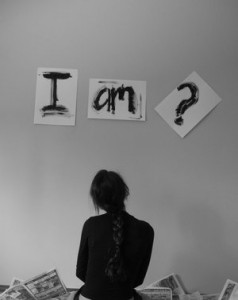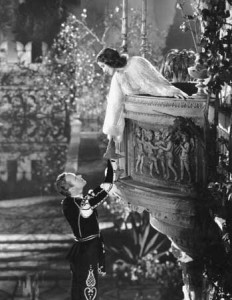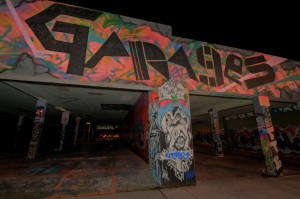How do we form our identity in communities? (English Language Arts)
We see interactions between individuals and communities every day. Sometimes these interacts are harmonious and sometimes they are full of conflict. Think about the city of Tacoma. Recently the graffiti garages, known for their colorful and legal graffiti, was shut down because residents were worried that the graffiti attracted a certain unsavory crowd. How is that a conflict between self and community? How did the identity of artists and a neighborhood interact? How do individuals create their identity within the community space? These are questions that students will explore as they read Romeo and Juliet and other texts in this unit. As a culminating project, students will create a video that interweaves themes from a text with pictures of their neighborhood to explore how their identities have been formed in the community.
Desired Results for Unit:
Established Goals:
RL.9-10.2: Determine a theme or central idea of a text and analyze in detail its development over the course of the text, including how it emerges and is shaped and refined by specific details; provide an objective summary of the text.
RL.9-10.3: Analyze how complex characters (e.g., those with multiple or conflicting motivations) develop over the course of a text, interact with other characters, and advance the plot or develop the theme.
W.9-10.9: Draw evidence from literary or informational texts to support analysis, reflection, and research.
SL.9-10.5: Make strategic use of digital media (e.g. textual, graphical, audio, visual, and interactive elements) in presentations to enhance understandings of findings, reasoning, and evidence and to add interest.
Anticipated Language Demands:
Vocabulary: various words from Romeo & Juliet, character, choice, agency.
Function: summarize, interpret, synthesize, justify.
Discourse: Plays, novels, visual symbols in neighborhood
Understandings:
Students will understand that…
- People/characters are mo
 tivated by desires.
tivated by desires. - Our identity affects our community and vice-versa.
- People/characters have agency.
- There can be conflict between the self and the community.
- Different cultures value
- ideas of self and community in different ways.
- Certain community members can control/attempt to control individuals’ expression of identity.
Unit/Essential Questions:
- How do we form our identity in communities?
- How is self-expression limited by those in power in our neighborhood?
- How do multiple cultures and backgrounds add to the complexity or our neighborhood?
Learning Targets:
Knowledge:
- Students will be able to identify key characters in Romeo & Juliet.
- Students will be able to identify a key theme in all our readings: self and the community.
Reasoning:
- Students will be able to analyze the motivations of the main characters in multiple works.
- Students will be able to compare the characters and their motivations across two works of literature.
- Students will be able to analyze the theme “self and community.”
- Student can choose and explain their reasoning for a visual and written expression of their identity and their community.
Product:
- Students will be able to create and present a movie that synthesis our central text, themselves, and the community.
- Students will be able to write a clear essay that uses evidence from the text to supper their analysis.
Assignment that involves technology:
As one of the assessments for this unit, students will write an essay that compares the theme of “individual and community” in our class text (Romeo & Juliet) and a choice novel.
Writing this essay will help them meet the disciplinary learning objective in the Common Core State Standards for writing: W.9-10.9: Draw evidence from literary or informational texts to support analysis, reflection, and research.
The overarching goal for this unit is that students begin to see the way that individuals and communities affect each other. Students will get to this point by:
 Reading our central text (Romeo and Juliet) and a choice text.
Reading our central text (Romeo and Juliet) and a choice text.- Comparing the two texts in an essay.
- Using the knowledge they have from the texts and their growing analysis skills (from the essay), working in groups to create a video that includes elements from one of the texts they read in class and images of their own community. The video will compare the individuals and communities found in text and students’ neighborhood.
- Screening video for family and friends.
The essay specifically helps students with their analysis skills which is necessary for creating the video and answering some of the big questions of this unit.
Other Resources to explore big idea of the unit:
- A unit on place, self, and community
This unit focuses on students identifying places that are important to them and what many of the places have in common. The emphasis is on tolerance and building community. The unit is made for elementary school but could be modified for higher grades. - A unit on individual versus society
This 10th Grade Unit includes standards, goals, assessments, and resources. - Analysis of themes in Romeo and Juliet
Website analyzes multiple themes to Romeo and Juliet, including individual versus society. - Article on identity
This article identifies some of the main points and steps to forming both a sense of individual and group identity. It also examines how our identity shapes our interactions with “adversaries.” - Books on the theme of identity vs. society
A list of possible books to use for this type of unit. - Storyboards on conflict in literature
A different type of technology (storyboards) to teach about conflict in literature. Includes completed storyboard of Romeo & Juliet.
This video might not focus on self and community (or individual vs. society), but it’s a fun video on Romeo & Juliet:
Technology for the unit:
 While students will be using multiple technologies as part of this unit, my focus is on concept mapping using the free online tool coggle. Concept mapping is a visual way to organize and connect information and ideas. Coggle has real time sharing, editing, and collaborating, like google docs. It features a clear, color-coded design, and students can add images or links. For this unit students would use coggle to:
While students will be using multiple technologies as part of this unit, my focus is on concept mapping using the free online tool coggle. Concept mapping is a visual way to organize and connect information and ideas. Coggle has real time sharing, editing, and collaborating, like google docs. It features a clear, color-coded design, and students can add images or links. For this unit students would use coggle to:
- Brainstorm ideas
- Organize evidence/references from text with main ideas
- Share with partners for feedback
- Use as the structure/outline as they write their essays
Using this technology would help students meet the learning targets by giving them a tool to identify and organize their textual evidence with their main ideas.
To helps students complete the project I might need to give mini lessons on:
- Using evidence in an essay
- Citing text
- Transitioning between ideas in an essay
- Presenting ideas in an essay with a logical sequence
For more information about coggle, click here.


